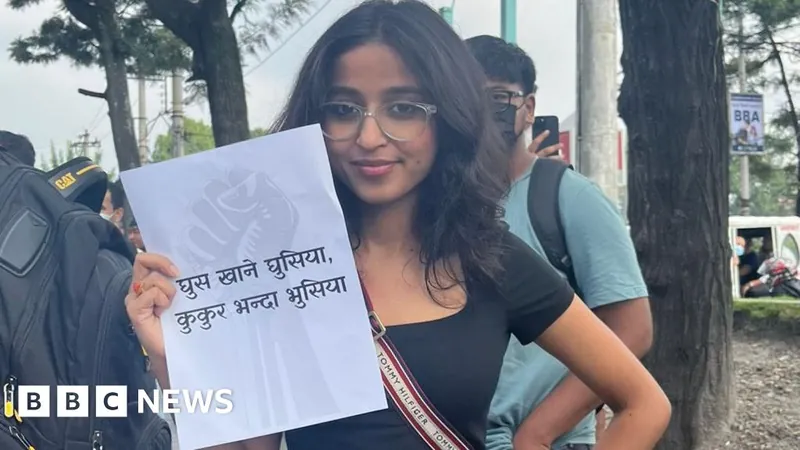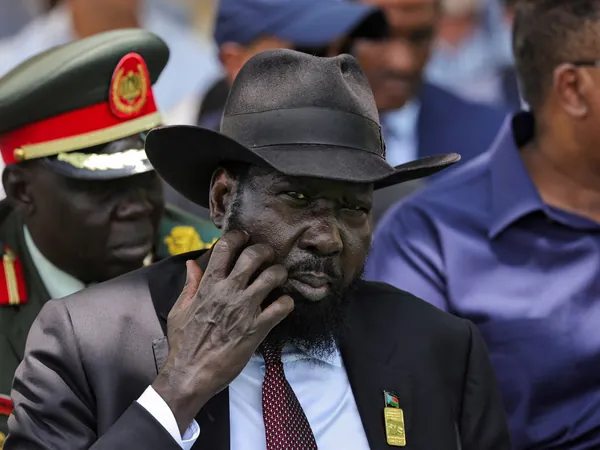
How Gen Z Sparked a Government Overhaul in Just 48 Hours
2025-09-16
Author: Kai
Nepal's Youth Revolt: A Rapid Overthrow of Power
In an astonishing display of determination, Nepal's Generation Z protesters have toppled the government in less than 48 hours, igniting a fierce debate about social justice and political accountability. As the dust settles, however, the aftermath reveals a chilling reality.
The High Stakes of Protest
Despite their victory, the protests have left a harrowing mark: 72 lives lost, making this episode the deadliest civil unrest in Nepal in decades. Buildings associated with politicians and luxury hotels didn’t escape the fury; many were set ablaze, including the residence of a former prime minister, with his wife now fighting for survival.
A System in Crisis
Ashish Pradhan from the International Crisis Group pointed out that the protests signify a complete rejection of a political class that has long squandered Nepal's resources. The unfolding chaos has resulted in catastrophic damage to government services, reminiscent of the devastation caused by the 2015 earthquake, which claimed nearly 9,000 lives.
A Call to Action
A few days prior to the eruption of violence, Tanuja Pandey, a 24-year-old environmental activist, shared a stirring video on social media, calling out the corruption rampant among politicians, whom she accused of exploiting the nation’s wealth. This message resonated widely among the youth, particularly following the government's attempt to ban 26 social media platforms.
Facing the 'Nepo Babies'
Public resentment toward the offspring of powerful politicians—dubbed 'nepo babies'—had been brewing, especially after one was photographed next to a lavish Christmas tree fashioned from luxury brand boxes. This only intensified the calls for rallying against privilege and corruption.
A Gathering Storm
As protesters filled the streets of Kathmandu on September 8, the atmosphere shifted from communal singing to tension as infiltrators mixed with genuine protesters, leading to violent clashes with police. Tear gas and live ammunition were reportedly used, amplifying an already volatile situation.
From Protest to Flames
The unrest escalated dramatically, culminating in demonstrators setting government buildings on fire. For many, the destruction represented a long-overdue reckoning with politicians who they felt had betrayed them.
A New Dawn or Continued Turmoil?
Following the chaos, former Supreme Court Chief Justice Sushila Karki was appointed as interim prime minister, a choice welcomed by many protesters. Yet, amid this shift, lingering anxiety about Nepal's political future persists.
Tragedy Strikes
Families of those who lost their lives during the protests are now grappling with their grief. Yogendra Neupane, a 23-year-old protester, was shot and killed, leaving his family questioning how such tragedy could unfold in their pursuit of change.
A Movement Defined by Resilience
Tanuja Pandey embodies the spirit of her generation; she speaks of a political awakening, stating, "We are no longer willing to stay silent or accept injustice." Despite facing unimaginable trauma, she and her fellow activists are committed to challenging a system that has long hoarded power.
A Glimpse of Hope in Chaos
As Nepal navigates this pivotal moment in its young democracy, the voices of its youth promise a resurgence of accountability and reform, resonating far beyond its borders.




 Brasil (PT)
Brasil (PT)
 Canada (EN)
Canada (EN)
 Chile (ES)
Chile (ES)
 Česko (CS)
Česko (CS)
 대한민국 (KO)
대한민국 (KO)
 España (ES)
España (ES)
 France (FR)
France (FR)
 Hong Kong (EN)
Hong Kong (EN)
 Italia (IT)
Italia (IT)
 日本 (JA)
日本 (JA)
 Magyarország (HU)
Magyarország (HU)
 Norge (NO)
Norge (NO)
 Polska (PL)
Polska (PL)
 Schweiz (DE)
Schweiz (DE)
 Singapore (EN)
Singapore (EN)
 Sverige (SV)
Sverige (SV)
 Suomi (FI)
Suomi (FI)
 Türkiye (TR)
Türkiye (TR)
 الإمارات العربية المتحدة (AR)
الإمارات العربية المتحدة (AR)